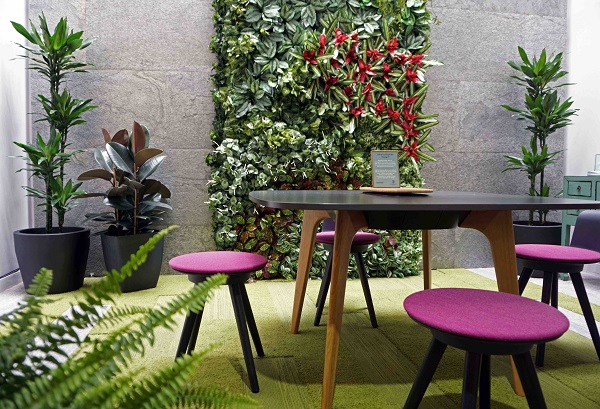Plessey today announced that they are a core partner in the world’s first biophilic design project. The ‘Biophilic Office’ is a ground breaking office-refurbishment project being run by BRE, the world’s leading building research organisation.
The project will be located on the BRE campus at Watford in a 650m2 office building. The building will be refurbished according to biophilic design principles, meaning a love of nature. Biophilia is based upon people’s innate attraction to living systems and natural processes. The project is designed to provide quantifiable evidence of the benefits of biophilic design on health, wellbeing and productivity of office occupants. The project is a comprehensive and long-term study that is unique in terms of scale and data capture.
 |
|
(Image: Plessey) |
A key aim will be to provide a firm foundation for the guidance and adoption of measures in the facilities management and refurbishment sectors to promote health and wellbeing in offices. As one of several core partners to the project, Plessey will be using the Biophilic Office, as well as its own test facilities, to evaluate its products’ role in promoting the health and wellbeing of office occupants, in addition to expanding research into biophilic design in general.
Over a three year period, Plessey will contribute its expertise and know-how in sensing and solid-state lighting technologies. These lighting technologies are commercially available in a range of Plessey’s products including the Hyperion family of high-power horticultural LED grow lights and the Orion series of LED modules. The Hyperion range has been designed to provide supplementary lighting in greenhouses and achieve increased productivity for growers, whilst providing a 40% energy saving compared to equivalent 600W and 1000W sodium lights. The Orion series of LED modules, also commercially available, delivers new levels of design freedom to architectural and industrial lighting designers.
“Plessey is delighted to be a core partner and to be able to make a contribution to this important research study into biophilic design”, said Dr. Keith Strickland, Plessey’s Chief Technology Officer. “We believe this exciting new project will yield much valuable data and enable us to develop lighting technologies that are truly people-centric, where light levels can be adapted to suit human circadian rhythms.”
Researchers will carry out a baseline year of pre-refurbishment and a year of post-refurbishment monitoring, evaluating the Biophilic Office environment for daylight, lighting, indoor air quality, acoustic, thermal and humidity comfort. Office occupants will undergo confidential health evaluations, and sign up to a series of online questionnaires and surveys. They will use wearable technology to monitor key health metrics.
Ed Suttie, Research Director at BRE, commented: “The project will show how quantified improvements in productivity and wellness can bring rewards for landlords, occupiers, developers and all those concerned with the office and wider built environment.”
More information on the project can be found at www.bregroup.com/biophilic












